How to Install an Inverter
When exploring how to install an inverter, it's important to understand its role in powering your appliances and electronic gadgets. Inverters transform DC (direct current) into AC (alternating current), enabling you to operate devices that need AC power. The market offers a variety of inverter types, such as AC and DC inverters, power inverters, solar inverters, and battery inverters.
These inverters serve multiple purposes, from electrifying homes to providing power for the office. Knowing the right type of inverter for your specific application is crucial for a successful installation.
Types of Inverters
When it comes to inverters, there are many different types available to suit specific needs. Here are some of the most commonly used ones:
| Type of Inverter | Applications | Benefits |
|---|---|---|
| Modified Sine Wave Inverter | Small electronics, such as phones and laptops | Convenient for people who need to charge their devices on the go |
| Pure Sine Wave Inverter | Sensitive electronics, such as computers and medical devices | Provides clean and stable power, protecting electronics from damage |
| Industrial Inverter | Heavy-duty machinery and equipment | Allows for efficient and reliable operation of machinery, improving productivity and minimizing downtime |
| Off-Grid Inverter | Cabins, RVs, and other off-grid settings | Enables people to live off the grid while still enjoying the benefits of electricity |
| Hybrid Inverter | Renewable energy systems that combine multiple sources of power, such as solar and wind energy | Maximizes the use of renewable energy sources, reducing reliance on non-renewable energy and lowering energy costs |
Choosing the right type of inverter for your specific needs is important for ensuring efficiency, reliability, and safety. Consider the applications and benefits of each type when making your selection.
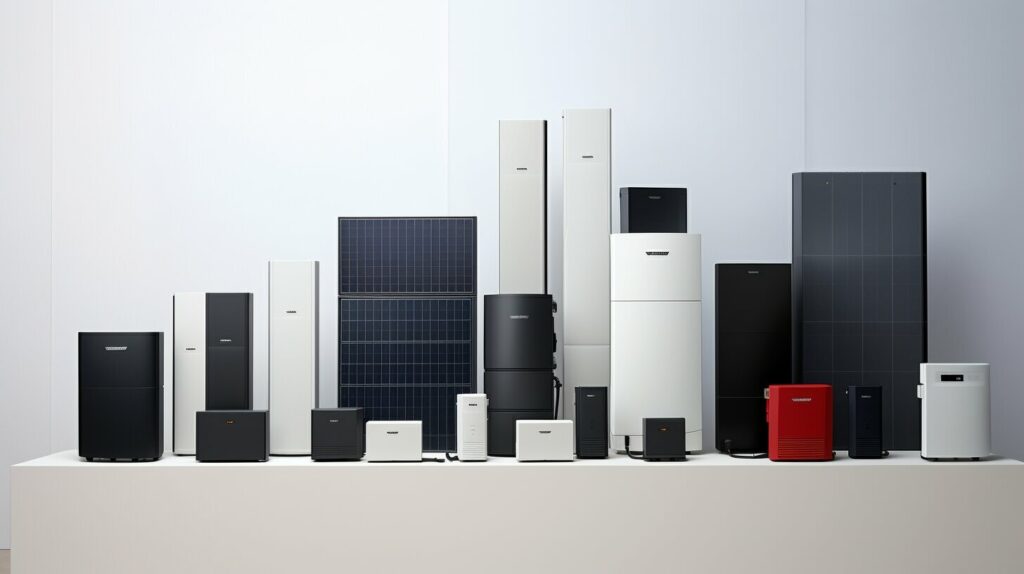
When considering how to install an inverter, one of the most critical steps is to accurately determine the right size for your specific needs. The size of the inverter you'll need is influenced by several factors, including the peak power usage you anticipate, the nature of the load, and any surge power requirements.
To figure out the correct inverter size, begin by calculating the maximum wattage of all the devices you intend to run at the same time. Add an extra 20% to this figure to account for potential power surges. This will provide you with the minimum inverter size you should consider.
Choosing an inverter of the appropriate size is crucial for optimal performance. An inverter that's too small won't be able to manage the load, potentially leading to damage or malfunction. Conversely, an inverter that's too large will result in unnecessary expenses and reduced efficiency.
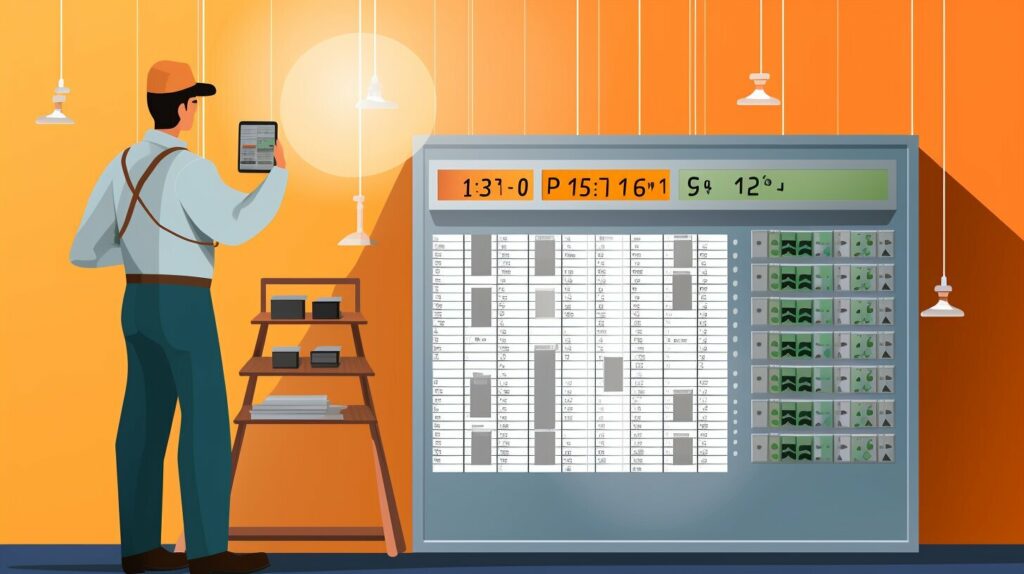
Once you've determined the appropriate inverter size, you can proceed with the installation process. Ensure that you follow the manufacturer's instructions carefully. Remember to consider the distance between the inverter and battery, as well as the type and gauge of the wires. This ensures a safe and effective installation process.
Inverter Installation
Thinking about how to install an inverter may seem daunting, but with careful planning and attention to detail, it can be a straightforward process. Proper installation is essential for efficient and safe operation of your inverter, so it's important to take the time to do it right. Here, we'll walk you through the steps for a successful installation.
1. Sizing Your Inverter: How to Install an Inverter of the Right Size
Before beginning any installation, it's important to determine the appropriate size of your inverter. Sizing involves calculating the maximum amount of power your inverter can handle, which is based on the wattage of the appliances you will be powering. To achieve the most accurate sizing, consider hiring a licensed electrician to perform a load analysis of your intended usage. This will ensure you choose the right size inverter for your needs.
2. Wire Selection: How to Install an Inverter with the Right Wiring
If you're wondering how to install an inverter, one key aspect after selecting the appropriate size is the wiring process. The gauge of the wire you choose is crucial for the inverter's overall performance. Using a wire that's too thin could lead to issues like voltage drops, while a too-thick wire might be cost-inefficient and space-consuming. For optimal performance, it's advised to use the wire gauge recommended by the inverter's manufacturer.
3. Establishing the Connection: How to Install an Inverter Safely
The next step is to connect the inverter to the power source and the appliances. This involves connecting the positive and negative cables from the inverter to the battery, as well as connecting the appliances to the inverter's AC output. Depending on the type of inverter, additional wiring may be required. Be sure to follow the manufacturer's instructions carefully to avoid any damage or injury.
4. Configuration: How to Install an Inverter for Optimal Performance
Once your inverter is wired and connected, it's time for setup. This involves configuring the inverter's settings to ensure optimal performance. Most inverters come with a user manual that provides instructions for this step. It's important to read and follow the manual carefully, as incorrect settings can cause damage to the inverter and appliances.
Remember, safety should always be your top priority when installing an inverter. Be sure to wear safety gloves and glasses, avoid touching any electrical components with wet or damp hands, and make sure to properly ground the inverter to prevent electrical shock or electrocution.
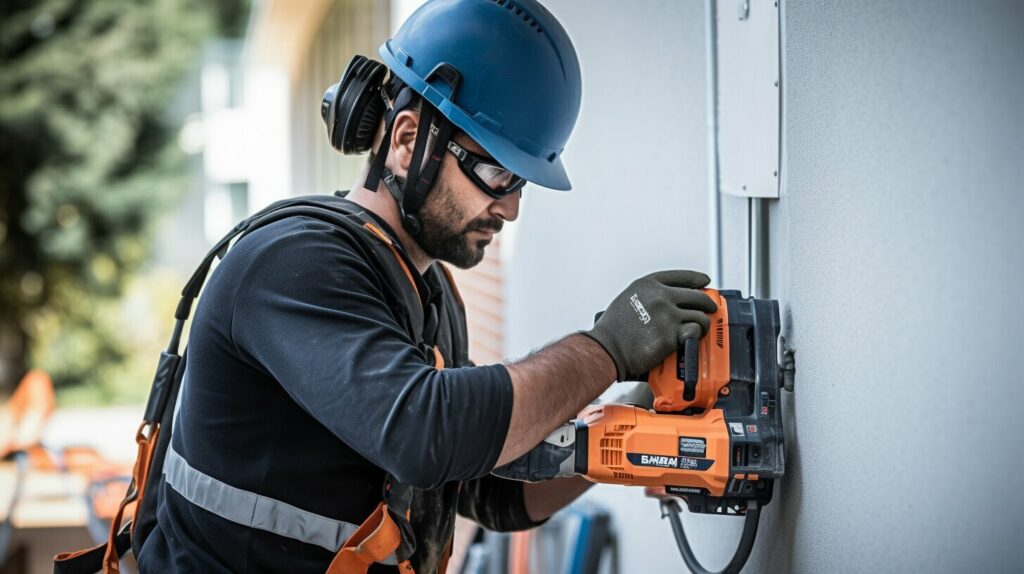
Inverter installation requires careful planning and attention to detail. Proper sizing, wiring, connection, and setup are essential for efficient and safe operation. Always prioritize safety when working with inverters.
Safety Measures: How to Install an Inverter Safely
Working with inverters can be dangerous, and taking appropriate safety measures is crucial to ensure a safe working environment. Here are some important safety considerations to keep in mind when installing or maintaining an inverter:
- Always turn off the inverter and disconnect it from the power source before working on it.
- Follow the manufacturer's instructions for installation, wiring, and setup.
- Ensure proper grounding by connecting the inverter to an appropriate grounding point.
- Use appropriate insulation to prevent electrical shock and short circuits.
- Do not touch circuit boards, electrical wires, or any other components of the inverter with bare hands.
- Avoid using damaged cords, bare wires, or frayed cables that can cause electric shock or fire hazard.
- Keep the inverter and all related equipment away from flammable or combustible materials.
- Ensure proper ventilation to prevent overheating, which can lead to a fire hazard.
By following these safety tips, you can help prevent accidents and ensure safe and effective operation of your inverter.
Tip: To further reduce the risk of electrical hazards, consider consulting a professional electrician for installation and maintenance of your inverter.
It is important to note that inverter safety is not only about preventing physical injuries or property damages. Using an inverter improperly can also impact the lifespan and performance of the equipment. Always ensure that you are using the correct inverter for your specific application and follow the manufacturer's guidelines for installation, maintenance, and usage.

When learning how to install an inverter, it's important to note that even with correct installation and regular maintenance, you may still face occasional issues with your inverter. Below are some standard troubleshooting methods to assist you in identifying and fixing any potential problems:
| Issue | Solution |
|---|---|
| Inverter not turning on | Check the connections and ensure the battery is fully charged. If the issue persists, check the fuse and replace if necessary. |
| Battery not charging | Ensure the battery is connected properly and that the charger is functioning correctly. If the issue persists, check the battery health and replace if necessary. |
| Overheating | Check for proper ventilation and ensure the inverter is not overloaded. If the issue persists, consider installing a cooling fan or upgrading to a higher wattage inverter. |
| Output voltage not stable | Check the input voltage and ensure it is within the inverter's operating range. If the issue persists, check the connections and make sure they are tight and secure. |
It is important to note that if you are not comfortable troubleshooting the issue yourself, it is best to consult a professional to avoid any further damage or safety risks.
Remember to always shut off the inverter and disconnect it from the power source before attempting any troubleshooting or maintenance.

Regular maintenance is crucial for ensuring that your inverter performs optimally. There are several steps you can take to keep your inverter functioning at its best:
- Clean your inverter regularly: Dust and debris can accumulate on the surface of your inverter over time, which can impede its performance. Use a soft cloth to gently wipe down your inverter periodically.
- Check your inverter's connections: Loose or corroded connections can affect your inverter's ability to function correctly. Regularly inspect your inverter's wiring and connections and tighten or clean them as necessary.
- Maintain proper ventilation: Inverters can generate a significant amount of heat during operation. Ensure that your inverter has proper ventilation to prevent overheating. Avoid placing your inverter in direct sunlight or near other sources of heat.
- Check your battery regularly: If your inverter is connected to a battery, ensure that the battery is functioning correctly. Check the battery's charge level and inspect it for any signs of damage or wear.
- Perform regular system checks: Test your inverter's performance periodically by running it through its paces. This can help identify any potential issues before they become major problems.
As you explore how to install an inverter, keep in mind that adhering to these maintenance guidelines can not only prolong the life of your inverter but also ensure its optimal performance for years to come.
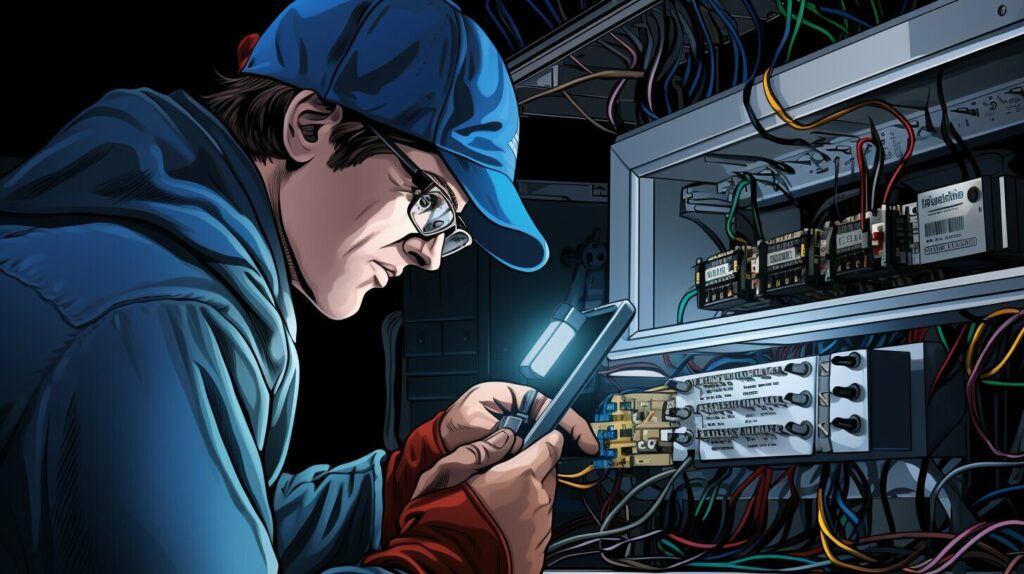
Inverters have a wide range of applications, making them an essential component in various settings. Below are some of the most common inverter applications:
| Application | Description |
|---|---|
| Powering Appliances | One of the most popular uses of inverters is to power appliances. Inverters can convert DC electricity from a battery or solar panel to AC electricity, allowing appliances to be powered without being connected to an electrical grid. |
| Off-Grid Systems | Inverters are also widely used in off-grid systems, such as cabins or remote homes that are not connected to the main power grid. Off-grid inverters can convert energy from sources such as solar panels or wind turbines into usable electricity. |
| Renewable Energy Installations | Inverters are a critical component in renewable energy installations, such as solar and wind power systems. Inverters can help convert the DC electricity generated by solar panels or wind turbines into AC electricity that can be used to power homes and businesses. |
| RVs and Boats | Inverters are commonly used in recreational vehicles and boats to provide power on the go. Inverters can convert DC power from the vehicle or boat's battery into AC power to run appliances and other electronics. |
| Emergency Power | Inverters are also useful for emergency power situations. A battery-powered inverter can be used to power essential appliances or electronics during a power outage. |
With the wide range of applications for inverters, it's important to choose the right one for your specific needs.
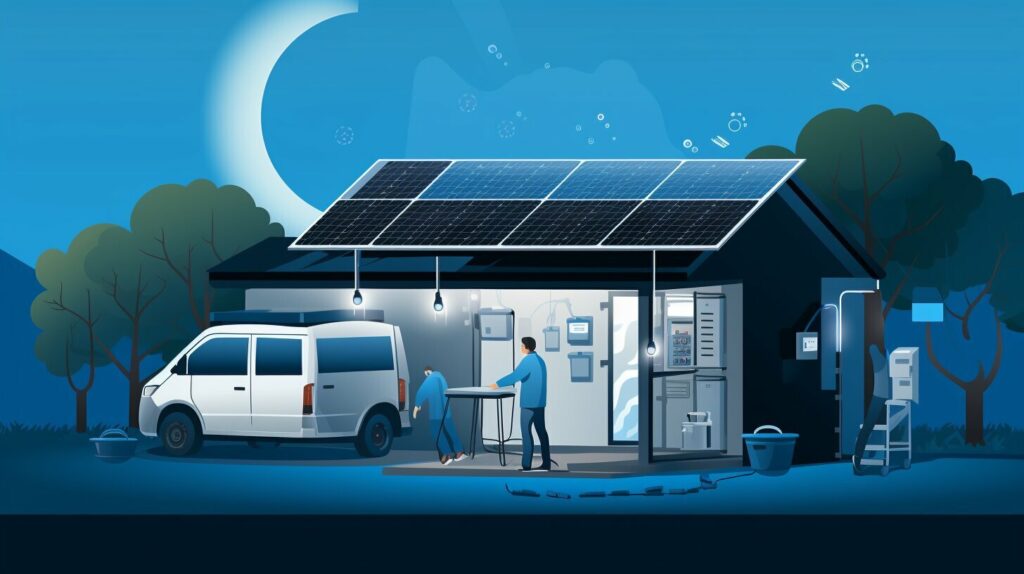
When it comes to selecting the right inverter for your needs, it's crucial to consider the brand's reputation and quality. Here are some of the most popular inverter brands and what sets them apart:
| Brand | Overview | Price Range (NGN) |
|---|---|---|
| Mercury | Popular brand with a wide range of products, affordable prices, and good customer service. Mercury inverters are known for their durability, efficiency, and reliability. | NGN 105,000 - NGN 6,020,000 |
| Luminous | Leading brand of high-quality solar inverters. Luminous inverters are known for their efficiency and reliability. | NGN 1,000,000 - NGN 8,000,000 |
| Prag | Offers a wide range of inverters for off-grid and on-grid systems, with options for solar panels and batteries. Prag inverters are known for their user-friendliness and excellent customer service. | NGN 100,000 - NGN 1,500,000 |
| Sukam | One of the most popular inverter brands in Nigeria, offering a wide range of products with high capacities. | NGN 200,000 - NGN 3,000,000 |
| Exide | Initially known for making batteries, Exide has expanded its offerings to include inverters. | NGN 100,000 - NGN 2,500,000 |
| Microtek | Offers a variety of inverters and UPS systems designed for homes and offices. | NGN 120,000 - NGN 2,800,000 |
It's important to read reviews from other customers before making a purchase. Look for reviews that discuss the brand's reliability, ease of installation, and warranty options. Consider the price range and features offered by each brand to find the best fit for your needs.
Remember that a high price does not always guarantee the best quality. Do your research and select a brand that offers reliable and efficient products at a reasonable price.
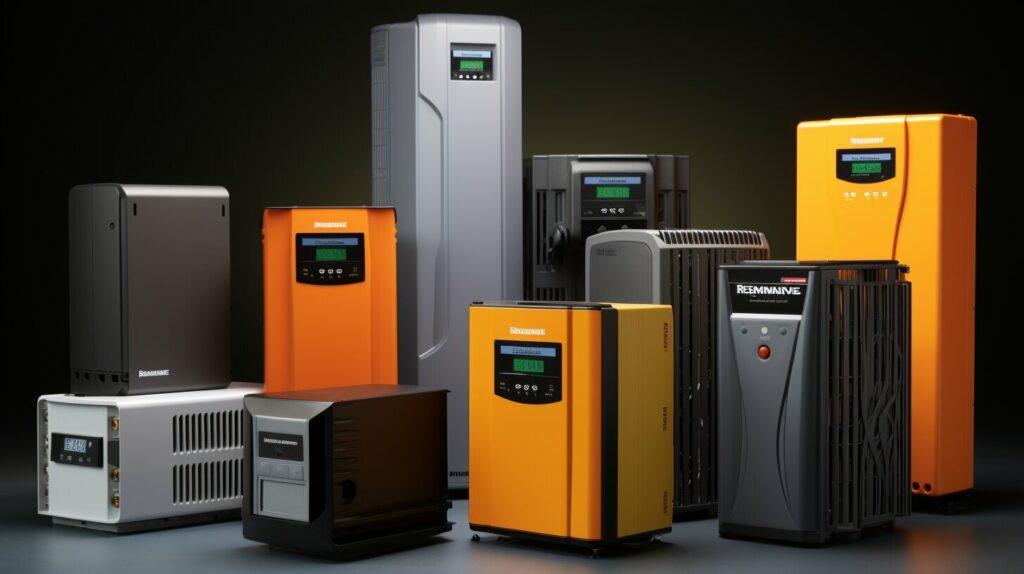
Installing an inverter has many benefits, including:
1. Power Availability
An inverter provides a constant and reliable source of power, allowing you to run appliances and devices even in the event of a power outage. This means you can continue to work, study, or live your daily life without any interruptions.
2. Energy Efficiency
Inverters are highly energy efficient, converting DC power from sources such as solar panels or batteries into usable AC power. This means you can save on energy costs and reduce your carbon footprint by using renewable energy sources.
3. Versatility
Inverters come in a variety of types and sizes, making them suitable for various applications such as powering appliances, off-grid systems, and renewable energy installations. This flexibility allows you to choose the inverter that best suits your needs.
4. Cost Savings
By using an inverter, you can save money on energy costs in the long run. In addition, inverters can help extend the lifespan of your appliances by providing stable and consistent power.
5. Increased Safety
Using an inverter can also improve safety, as it provides clean and stable power without any voltage fluctuations or surges. This can help prevent damage to your appliances and reduce the risk of electrical fires.
Overall, installing an inverter can provide many benefits, from increased power availability and energy efficiency to cost savings and increased safety. Consider incorporating an inverter into your home or business for reliable and efficient power.
FAQ
Q: How to install an inverter?
A: To install an inverter, you will need to follow a specific set of instructions. This typically involves connecting the inverter to a power source, such as a battery or solar panel, and ensuring proper wiring and grounding. It is important to carefully read the manufacturer's instructions and consult a professional if necessary.
Q: What are the different types of inverters?
A: There are several types of inverters available, including AC and DC inverters, power inverters, solar inverters, and battery inverters. AC inverters convert DC power to AC power, while DC inverters convert AC power to DC power. Power inverters allow you to convert DC power from a battery to AC power, making them useful for activities such as camping or powering electronic devices in your car. Solar inverters are specifically designed for use with solar energy systems, while battery inverters are used to convert DC power stored in batteries to usable AC power.
Q: How do I determine the size of an inverter I need?
A: Inverter sizing is an important consideration to ensure optimal performance. To determine the size of an inverter you need, you should consider the power requirements of the devices or appliances you plan to power. Calculate the total wattage or VA (volt-ampere) rating of the devices and choose an inverter that can handle the total load. It is recommended to choose an inverter with a capacity slightly higher than the total load to account for any power surges or future additions to your system.
Q: What are some important safety considerations when working with inverters?
A: Safety should always be a top priority when working with inverters. Some important considerations include proper grounding to prevent electrical shock, ensuring insulation of wires and connections, and handling inverters with caution to avoid injury. It is also important to follow all manufacturer's instructions and consult a professional if you are unsure about any safety measures.
Q: What are some common troubleshooting techniques for inverters?
A: If you encounter issues with your inverter, there are a few troubleshooting techniques you can try. First, check the wiring connections to ensure they are secure and properly connected. You should also check the inverter's display or indicators for any error messages or warnings. If the issue persists, you may need to consult the manufacturer's manual or contact customer support for further assistance.
Q: How do I maintain my inverter?
A: Regular maintenance is important to ensure the longevity and performance of your inverter. Some maintenance tips include keeping the inverter clean and free from dust or debris, checking and tightening any loose connections, and monitoring the inverter for any signs of wear or damage. It is also recommended to follow the manufacturer's maintenance guidelines and schedule regular inspections by a qualified professional.
Q: What are some common applications of inverters?
A: Inverters have a wide range of applications. They can be used to power appliances in homes or offices, provide electricity in off-grid or remote locations, and enable renewable energy systems such as solar or wind power. Inverters are also commonly used in various industries, including marine, automotive, and industrial sectors.
Q: How do I choose the right inverter brand?
A: When selecting an inverter brand, it is important to consider factors such as reliability, performance, and customer reviews. Research different brands, read customer reviews, and compare product specifications to find a brand that suits your specific needs and budget. It may also be helpful to consult with professionals in the industry or seek recommendations from trusted sources.
Ready to Take the Next Step? Learn How to Install an Inverter with Mercury Direct!
If you've been wondering how to install an inverter that perfectly suits your needs, look no further. At Mercury Direct, we offer a wide range of high-quality inverters, along with expert guidance to help you through the installation process. Our team of professionals is always ready to assist you in selecting the right inverter and ensuring a safe and efficient installation.
👉 Visit Mercury Direct today to explore our extensive selection of inverters and take the guesswork out of how to install an inverter.
Let us help you power your world, the smart way!

